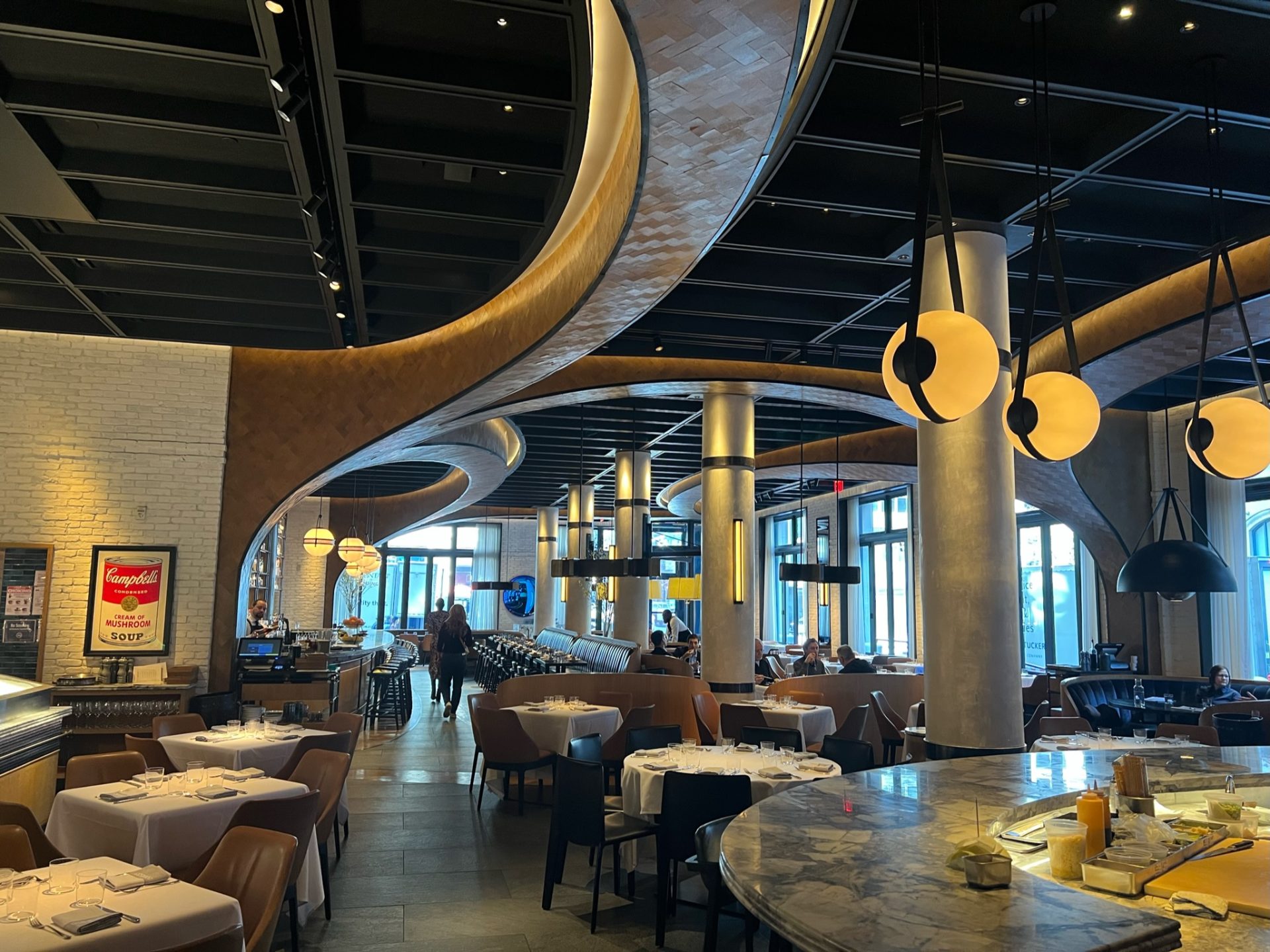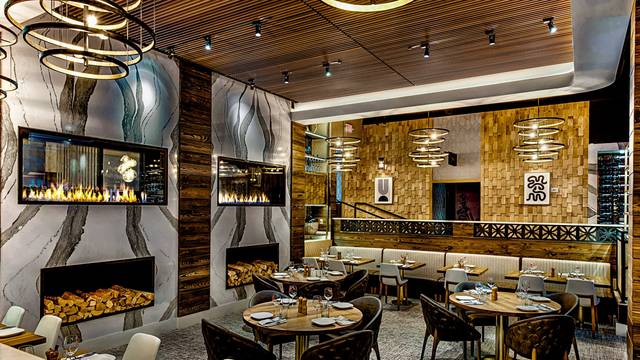Best Asian Restaurant Islamabad: Experience Tastes from Throughout Asia
Best Asian Restaurant Islamabad: Experience Tastes from Throughout Asia
Blog Article
Savor Authentic Asian Cuisine With a Pan-Asian Twist for a Cooking Journey
Getting started on a culinary trip with authentic Asian cuisine, enhanced with a Pan-Asian twist, uses a special possibility to explore the abundant tapestry of flavors that specify the area's diverse cooking customs. As you consider these tempting recipes, think about the social stories and historic impacts that form them, each bite supplying a story waiting to be found. pan asian dining Islamabad.

Exploring Pan-Asian Flavors
In the realm of international gastronomy, Pan-Asian cuisine stands apart for its impressive variety and the unified interaction of tastes from various Asian cultures. This culinary method celebrates the distinct ingredients and abundant customs found throughout the continent, creating a tapestry of preferences that is both rewarding and fascinating. Secret to Pan-Asian food is its capacity to stabilize contrasting tastes-- pleasant, salty, spicy, and sour-- while highlighting the freshness and high quality of each ingredient.
From the umami-rich soy sauce of Japan to the intense chili peppers of Thailand, Pan-Asian food uses a considerable palette of flavors. These aspects are typically integrated in creative methods, boosting meals with layers of complexity. For circumstances, using aromatic herbs such as lemongrass and cilantro, common in Vietnamese and Thai food, adds a refreshing illumination to recipes, while the consolidation of coconut milk provides a luscious, rich appearance.
The emphasis on fresh produce and fragrant seasonings guarantees that each dish is not just a banquet for the palate but also for the senses. Pan-Asian food invites diners to begin on a cooking trip, exploring the large and varied landscapes of Oriental gastronomy with every bite.
Fusion Dishes to Attempt
While Pan-Asian cuisine is celebrated for its conventional flavors, the modern cooking landscape is progressively accepting blend meals that blend these traditional aspects with impacts from other areas. This cutting-edge technique not only honors the abundant heritage of Eastern cookeries however also presents novel taste experiences that interest modern tastes.
An archetype of such a fusion meal is the Korean-Mexican taco, where marinaded bulgogi beef is wrapped in a cozy tortilla, covered with kimchi and a hot gochujang-infused salsa. This combination weds the bold, tasty tastes of Korea with the lively, fresh components of Mexican food. Likewise, sushi burritos have actually gotten popularity, integrating the fragile creativity of Japanese sushi with the passionate, hand-held ease of a burrito, frequently including blend components like tempura shrimp and avocado with a drizzle of wasabi mayo.
An additional significant recipe is Thai curry ramen, which instills the luscious, fragrant flavors of Thai curry into the soothing broth of standard Japanese ramen, creating a harmonious blend that tantalizes the detects. These combination recipes expand beyond simple novelty; they stand for a culinary discussion between cultures, motivating exploration and development on the planet of Pan-Asian cuisine.
Important Active Ingredients and Flavors
To genuinely appreciate Pan-Asian food, one have to understand the essential active ingredients and seasonings that create its foundation. This diverse culinary design attracts from an abundant tapestry of Asian practices, using an unified mix of appearances and flavors. Trick components consist of soy sauce, fish sauce, and oyster sauce, which give a mouthwatering umami deepness vital to Eastern meals. Corresponding to these are rice vinegar and mirin, offering a fragile acidity and sweetness.
Fragrant aspects are essential, with ginger, lemongrass, and garlic being common throughout numerous Pan-Asian recipes. These ingredients give an aromatic base that enhances the intricacy of flavors. Spices such as star anise, cardamom, and cinnamon introduce heat and character, resembling influences from areas like China and India.

Food Preparation Methods and Tips
Mastering the art of Pan-Asian cuisine requires knowledge with its distinct food preparation strategies, each adding to the vivid tapestry of flavors this cooking practice is celebrated for. Central to these methods is the stir-fry, a rapid cooking technique that preserves the nutritional honesty and vibrant shades of components. Using a frying pan, the stir-fry technique enables also warm circulation, essential for achieving the particular structure and taste equilibrium of Pan-Asian recipes.
Another basic strategy is steaming, specifically widespread in Chinese food. This gentle technique maintains the all-natural flavors and nutrients of components, making it ideal for fish and shellfish and veggies. Dumplings, a cherished staple, often take advantage of steaming, resulting in soft, succulent textures.
Cooking, also indispensable, gives great smoky midsts to dishes such as Oriental bulgogi or Japanese yakitori (best asian restaurant Islamabad). This method typically includes seasoning ingredients, enabling tastes to penetrate deeply prior to cooking over an open flame or warm plate
Last but not least, understanding the art of balancing flavors-- wonderful, sour, salty, bitter, and umami-- is important. Effectively layering these components can boost a dish from common to extraordinary, providing a complex and satisfying cooking experience that personifies the essence of Pan-Asian cuisine.
Dining Experiences Worldwide
Around the world, Pan-Asian cuisine offers an unequaled eating experience, commemorated for its abundant tapestry of flavors and lively presentations. This cooking sensation has gone beyond cultural limits, catching the hearts and palates of food lovers worldwide. In cosmopolitan cities like New York, London, and Sydney, Pan-Asian restaurants function as fusions where culinary practices from Thailand, Japan, China, and past converge, providing diners with a diverse mix of meals that highlight the region's diversity.
The worldwide appeal of Pan-Asian cuisine hinges on its capability to provide both authenticity and development. Cooks skillfully wed typical active ingredients such as lemongrass, soy sauce, and miso with have a peek at this website modern techniques, resulting in dishes that la place are both refreshingly new and acquainted. This combination allows restaurants to embark on a cooking trip that values heritage while embracing modernity.
Furthermore, eating experiences are raised via attentively developed atmospheres that show the ethos of Pan-Asian aesthetics. From minimalist Japanese-inspired insides to lively Thai-themed spaces, each restaurant supplies an unique ambiance that matches the cooking offerings. Consequently, patrons are not simply eating a dish but partaking in a cultural experience, making Pan-Asian eating a genuinely global sensation.
Conclusion
The expedition of Pan-Asian cuisine uses a profound understanding of the complex interplay of flavors and cooking practices across Asia. By embracing blend meals such as Thai curry ramen and sushi burritos, the culinary journey not just highlights the flexibility of typical ingredients yet also showcases ingenious modern-day methods. This gastronomic adventure, improved by vital flavors and cooking techniques, supplies an one-of-a-kind opportunity to value the multiculturalism and cooking artistry that specify Pan-Asian cuisine on a worldwide range.
Beginning on a cooking journey through authentic Asian food, boosted with a Pan-Asian spin, uses an unique chance to discover the abundant tapestry of tastes that define the region's diverse cooking traditions.In the world of worldwide gastronomy, Pan-Asian cuisine stands out for its exceptional diversity and the harmonious interaction of tastes from various Eastern societies. Trick to Pan-Asian food is its capacity to stabilize contrasting tastes-- sweet, salted, spicy, and sour-- while highlighting the sushi near me quality and high quality of each component.

Report this page